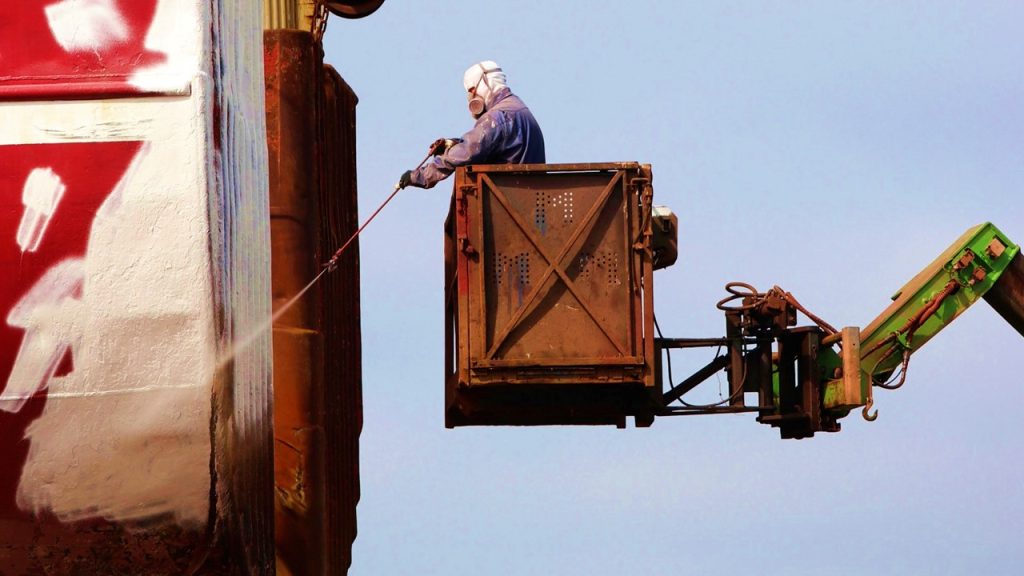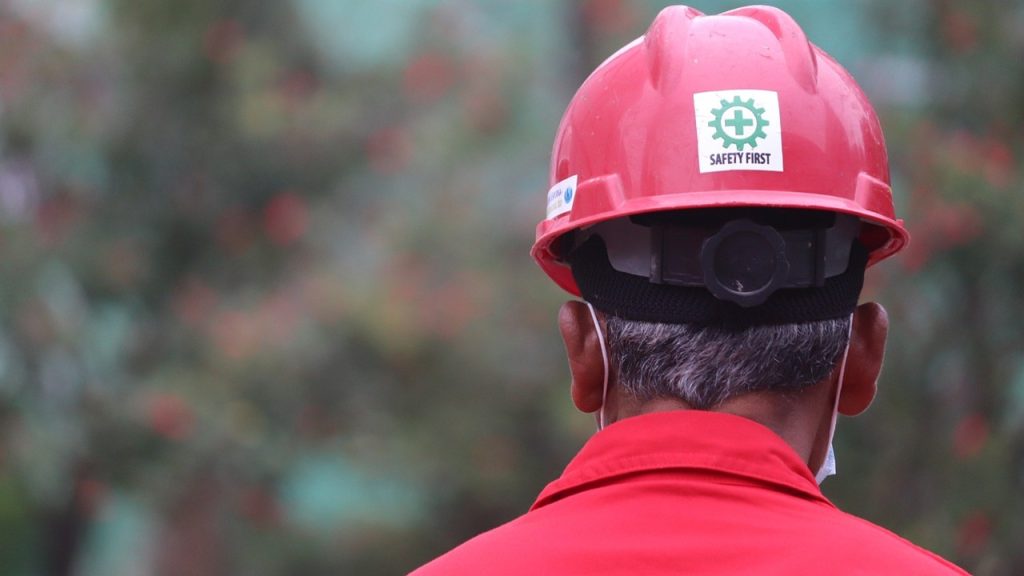Seaports, also known as piers, wharves, docks, anchorage, and harborage in the Philippines, have long been the lifelines of global trade, connecting nations and facilitating the movement of goods on an unprecedented scale. As the backbone of international commerce, seaport construction plays a pivotal role in shaping and enhancing these vital hubs. However, what truly defines the blueprint of an ideal seaport construction? Is it the strategic location, state-of-the-art infrastructure, or sustainable design? In this article, we delve into the key elements that make up an exceptional seaport construction project, shedding light on how these factors converge to create a dynamic and efficient gateway for global trade.
Click here to view our shipyard facilities in Tanza, Cavite.
The Importance of a Well-Designed Seaport in the Philippines
A well-designed seaport is crucial for the economic growth and development of a country like the Philippines. With its vast archipelago of over 7,000 islands, the Philippines heavily relies on maritime transportation to connect its different regions and facilitate trade. An efficiently designed seaport can improve logistical operations, reduce transportation costs, and increase the competitiveness of Filipino businesses both domestically and internationally.
One key aspect of a well-designed seaport is its ability to handle increasing cargo volumes. As global trade continues to grow, it is essential for Philippine seaports to have adequate infrastructure and equipment in place to accommodate larger vessels and higher cargo volumes. This requires deepwater berths, modern cranes, efficient storage facilities, and well-planned road connections to ensure seamless movement of goods from port areas to hinterlands.
Furthermore, a well-designed seaport should prioritize sustainability and environmental preservation. The Philippines is known for its rich biodiversity and delicate ecosystems. Therefore, any construction or expansion must be mindful of the potential impact on marine life, coral reefs, mangroves, and other coastal habitats. Investing in technologies that reduce pollution levels, such as shore power facilities for vessels, can help mitigate negative effects on the environment while enabling sustainable growth.
A well-designed seaport plays a critical role in connecting various regions within the Philippines while promoting economic growth through efficient logistics and increased competitiveness.
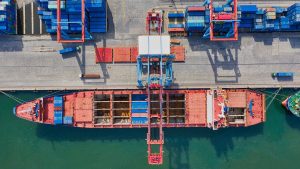
Factors to consider in seaport construction in the Philippines
One of the critical factors to consider in seaport construction in the Philippines is the location. The geographical characteristics of an area, such as its proximity to major trade routes and availability of natural harbors, greatly determine a seaport’s potential for success. It is essential to choose a location that offers deep enough waters for large vessels, convenient access to transportation networks, and ample space for expansion.
Another crucial factor is infrastructure development. Seaports require efficient road and rail connectivity to facilitate the movement of goods from ports to their final destinations. Investing in modern highways, bridges, and railways that integrate seamlessly with the port infrastructure will not only enhance efficiency but also attract investors and promote economic growth. Furthermore, ensuring accessibility for people with disabilities within port facilities should be prioritized in order to promote inclusivity and equal opportunities.
Moreover, environmental sustainability cannot be overlooked when considering seaport construction. The maritime industry contributes significantly to global greenhouse gas emissions; therefore, implementing green infrastructure solutions at ports can be instrumental in reducing this impact. Incorporating renewable energy sources such as solar or wind power into port operations can help reduce reliance on fossil fuels while minimizing pollution. Additionally, integrating eco-friendly practices like waste management systems, water conservation measures, and habitat restoration efforts can further enhance a seaport’s ecological footprint.

Location selection: Factors to consider for Seaport in the Philippines
When selecting a location for a seaport construction project in the Philippines, there are several key factors that must be considered. One of the most important factors is the proximity to major shipping routes and trade hubs. Being situated near these routes allows for easy access to international markets and can significantly boost economic growth in the region.
Another crucial factor to consider is the depth and condition of the water at the potential seaport site. The water depth should be sufficient for large cargo vessels to navigate without any restrictions while also considering factors such as tides and currents. Additionally, it’s important to assess whether dredging would be necessary to maintain an optimal depth over time.
Furthermore, environmental considerations play a significant role when selecting a seaport location. An environmentally friendly port design that minimizes negative impacts on surrounding ecosystems should be prioritized. This includes proper waste management practices, wildlife conservation measures, and pollution prevention strategies.
By carefully considering these factors – proximity to major shipping routes, water depth, and environmental sustainability – developers can ensure that they select an ideal location for a seaport construction project. Doing so will not only benefit local economies but also contribute to international trade networks and promote sustainable development in the long run.
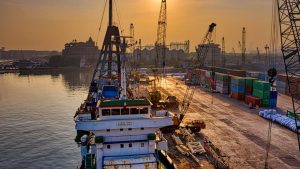
Efficient layout and design for optimal functionality of Seaport Construction in the Philippines
Efficient layout and design are crucial elements in ensuring the optimal functionality of seaport construction in the Philippines. Given the archipelagic nature of the country, seaports serve as vital gateways for trade, connecting various islands and facilitating economic growth. A well-designed layout that takes into account factors such as accessibility, cargo handling capabilities, and expansion potential can significantly enhance efficiency and minimize operational costs.
One key consideration during the planning phase is optimizing space utilization within the port area. By employing strategic zoning techniques, ports can allocate designated areas for different functions such as cargo storage, container stacking, berthing facilities, and administrative buildings. This segregation not only streamlines operations but also allows for smoother traffic flow within the port premises. Additionally, incorporating designated zones for inspection areas and customs clearance can expedite processes by minimizing congestion at key checkpoints.
Furthermore, a focus should be placed on designing efficient transportation links to connect seaports with major highways or railway networks. These connections not only enable the smooth movement of goods but also facilitate intermodal transport options such as truck-rail or truck-barge combinations. Implementing advanced automation systems like robotic cranes or optical character recognition technology at container terminals can enhance productivity while reducing human error. Prioritizing sustainable infrastructure solutions within seaport construction plans is also crucial to align with global environmental goals and ensure long-term viability.
An efficient layout and design are essential in maximizing functionality in seaport construction projects in the Philippines.
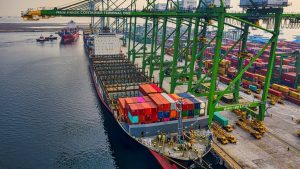
Infrastructure requirements: Dock facilities, Shipyard repair, warehouses, etc.
In order for a seaport to function efficiently and effectively, it must have adequate infrastructure in place, including dock facilities, shipyard repair areas, and warehouses. Dock facilities are crucial for the loading and unloading of cargo from ships, allowing for smooth operations and minimal delays. These facilities should be equipped with modern technology, such as cranes and conveyors, to ensure quick turnaround times.
Shipyard repair areas are equally important as they provide essential maintenance services for ocean-faring vessels. A well-equipped shipyard can handle repairs ranging from routine maintenance to major overhauls, thus extending the lifespan of ships and ensuring their safe operation at sea. It is imperative that these facilities have sufficient space to accommodate multiple ships at a time, reducing wait times for vessels in need of repairs.
Warehouses play a vital role in any seaport’s operations as they provide storage space for goods awaiting shipment or distribution. These warehouses must be strategically located near the port area to facilitate efficient transportation both by land and sea. Additionally, advanced technology such as RFID tracking systems can be implemented within these warehouses to streamline inventory management and enhance security.
Overall, the success of a seaport greatly depends on its infrastructure requirements. By investing in state-of-the-art dock facilities, shipyard repair areas, and efficient warehouses, the Philippines can establish itself as a premier seaport destination – attracting more shipping companies and facilitating smooth maritime trade operations.
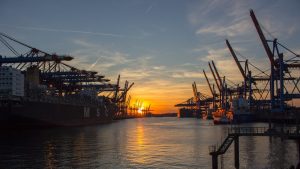
What are the Different Parts of the Seaport?
The construction of a seaport involves various components that work together to ensure efficient and safe maritime operations. One crucial part of a seaport is the berths, which are designated areas where vessels can dock for loading and unloading cargo. Berths typically have adequate depth and width to accommodate different types and sizes of ships, allowing them to berth safely.
Another key component is the terminal facilities, which include warehouses, storage yards, and container handling equipment. These facilities serve as crucial infrastructure for storing and transferring goods between ships, trucks, or rail transport. An efficiently designed terminal ensures seamless movement of cargo within the port area while optimizing space utilization.
Furthermore, an essential aspect often overlooked in modern port construction is green spaces or recreational areas within the port vicinity. Integrating parks or open spaces not only adds aesthetic value but also provides a much-needed respite for workers or visitors within the busy maritime environment. Such recreational areas promote well-being and improve the overall work-life balance for individuals working in the seaport.
An ideal seaport construction includes various elements such as berths, terminal facilities, and green spaces that work harmoniously to facilitate smooth operation while considering the welfare of its users. By understanding these different parts’ significance and ensuring their efficient integration into port designs, we can create more sustainable and functional ports that contribute positively to trade activities in countries like the Philippines.

1. Terminal Facilities: Container Yards and Warehouses
Container yards and warehouses are crucial components of terminal facilities in a seaport. These areas serve as temporary storage spaces for the vast number of containers that pass through the port on a daily basis. Additionally, they play a pivotal role in ensuring efficient logistics operations and seamless cargo flow.
The layout and design of container yards must be carefully planned to maximize space utilization while maintaining easy accessibility. This includes strategically positioning storage areas for different types of containers, such as refrigerated containers or hazardous materials, to ensure proper handling and safety protocols. Furthermore, advanced technologies like automated stacking cranes can greatly enhance productivity by enabling efficient movement and retrieval of containers within the yard.
Similarly, warehouses within terminal facilities act as hubs for various value-added services such as packaging, labeling, sorting, and even assembly operations. To optimize their functionality, these warehouses should be equipped with modern equipment like conveyor belts or robotic systems to enable quick processing and dispatching of cargo items.
Well-designed container yards and warehouses are integral to the smooth operation of a seaport by facilitating efficient handling and storage of containers. By investing in state-of-the-art technology and optimizing space utilization strategies, seaports can enhance their overall competitiveness and become key players in global supply chains.
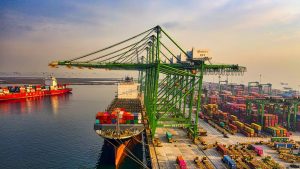
2. Berth Facilities: Wharves and Piers
Berth facilities are a vital component of any seaport, serving as the lifeline between water and land transportation systems. In the Philippines, where many islands depend heavily on maritime trade, the construction, and maintenance of wharves and piers are crucial for economic growth and development.
Wharves typically refer to solid structures built along the shore or riverbank, providing docking spaces for vessels to load and unload cargo. Piers, on the other hand, extend out into deeper waters to accommodate larger ships that cannot access the shallower wharves. A well-designed berth facility should take into account factors such as water depth, wave heights, tidal variations, windspeeds, and vessel sizes in order to ensure safe operations.
One innovative approach to constructing berth facilities is by utilizing flexible modular design concepts. This entails using prefabricated components such as floating pontoons or concrete modules that can be easily assembled or disassembled according to changing port requirements. By employing this method, seaports can adapt and expand their berthing capacity efficiently without disrupting ongoing operations.
Furthermore, incorporating environmental sustainability measures in berth construction has become increasingly important. Utilizing eco-friendly materials like recycled plastic or composite materials not only reduces carbon footprint but also provides added durability against corrosion from saltwater exposure.
Well-constructed wharves and piers are essential for a thriving seaport industry in the Philippines.

3. Support Facilities: Customs, Immigration, and Security
When it comes to the construction of an ideal seaport in the Philippines, one crucial aspect that cannot be overlooked is the provision of efficient support facilities such as customs, immigration, and security. These facilities play a critical role in ensuring smooth operations at the port and facilitating international trade.
Customs facilities are essential for inspecting and clearing goods that enter or exit the country through the seaport. An efficient customs system not only expedites cargo handling but also helps prevent smuggling and other illicit activities. Streamlining procedures, implementing technology-driven processes such as electronic data interchange (EDI), and providing adequate training for customs personnel can greatly enhance efficiency.
Immigration facilities are equally important in a seaport environment as they ensure smooth entry and exit of passengers to and from visiting vessels. Having dedicated immigration counters with trained officers can help expedite immigration clearance procedures for both arriving and departing passengers. Additionally, modern technologies like biometrics systems can be implemented to streamline passenger processing further while maintaining high levels of security.
Security is a paramount concern at any seaport, considering its vulnerability to illegal activities such as drug trafficking, terrorism, piracy, etc. The presence of well-trained security personnel supported by advanced surveillance systems ensures a safe environment within the port premises. Integrated access control systems combined with regular risk assessments contribute to enhancing security measures further.
Support facilities like customs, immigration, and security are integral components required for an ideal seaport construction in the Philippines.

4. Navigation Channel: Dredging and Maintenance
The navigation channel is a vital component of any seaport, as it provides a crucial pathway for vessels to enter and exit the port safely and efficiently. Dredging and maintenance play a significant role in ensuring the continuous functionality of these channels.
Dredging involves removing sediment and other obstructions from the channel bed, improving water depth, and allowing larger ships to navigate through. However, dredging is not a one-time task but an ongoing process that requires regular maintenance. Neglecting dredging can lead to excessive sedimentation, which restricts vessel movements, increases operational costs, and even jeopardizes port safety.
Maintenance of the navigation channel encompasses various activities such as periodic inspections, silt monitoring systems installation, and regular surveys using advanced technologies like side-scan sonar or multibeam survey equipment. These tools provide accurate data on seabed conditions, identifying potential hazards or obstructions that may require immediate attention.
By prioritizing dredging and maintenance of navigation channels within seaports in the Philippines’ blueprint for construction projects, we can ensure safe transits for vessels while boosting trade opportunities. It’s crucial to recognize that maintaining an optimally functional navigation channel is just as important as constructing new facilities or expanding ports. With well-maintained channels featuring sufficient depths for large vessels to access ports efficiently, we can optimize shipping operations, stimulate economic growth in coastal regions, and enhance connectivity with international markets.

5. Intermodal Connections: Railways, Highways, and Airports
Intermodal connections are the lifeline of any modern seaport, ensuring efficient movement of goods and people between different modes of transportation. Railways, highways, and airports play crucial roles in establishing these connections that facilitate trade and economic growth.
Railways provide a cost-effective and sustainable solution for transporting large volumes of cargo over long distances. The integration of rail lines with seaports enables seamless movements of containers from ships to trains, reducing congestion on highways and decreasing overall transportation costs. Additionally, railways offer faster delivery times compared to road transportation, making them an attractive option for time-sensitive cargo.
Highways serve as the primary link between ports, manufacturing plants, distribution centers, and other key logistical hubs. Well-designed highway networks ensure the smooth flow of goods by connecting various regions within a country’s transport infrastructure. A robust highway system near seaports allows for streamlined movement of cargo between different modes of transportation, like ships and trucks. Moreover, well-maintained roads with sufficient capacity can significantly reduce congestion bottlenecks that often plague ports’ surroundings.
Airports play a critical role in interconnecting supply chains on a global scale. They facilitate the rapid movement of high-value or perishable goods that require expedited shipping options. Integrating airports into seaport construction blueprints enables quick transfers from air cargo to sea freight modes while providing access to international markets across continents seamlessly.
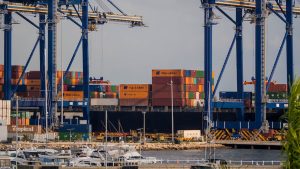
6. Shipyard: Drydocking Maintenance of Vessels at Seaport in the Philippines
The drydocking maintenance of vessels at a shipyard in the Philippines, like Amaya Dockyard & Marine Services Inc. in Tanza, Cavite, is an essential aspect of an ideal seaport construction. This intricate process ensures that ships remain seaworthy and operate efficiently. At the shipyard, vessels are hauled out of the water onto a dry dock, allowing for thorough inspection and repair work to be carried out. This maintenance routine includes activities such as hull cleaning, painting, propeller repairs, and machinery overhaul.
- Email us: info@amayadockyard.com
- Call our 24-hour hotline: +63 917 633 0479
- Viber: +63 917 633 0479
- WhatsApp: +63 917 633 0479
- Facebook Messenger: Click here
- Click here to inquire
One interesting aspect of this process is the expertise required to handle various types of vessels. Each ship has its own unique requirements in terms of design, size, and functionality. Shipyards in the Philippines must be equipped with advanced facilities and skilled personnel to cater to these diverse needs effectively.
Additionally, drydocking maintenance plays a crucial role in ensuring environmental sustainability within the maritime industry. During this period, ships undergo thorough inspections for any potential pollution risks, and necessary measures are taken to mitigate them. By adhering to strict regulations during drydocking maintenance procedures, seaports contribute significantly towards preserving marine ecosystems while maintaining their efficiency for international trade activities.
The drydocking maintenance process at seaports in the Philippines is an integral part of constructing an ideal seaport facility. This meticulous attention given to vessel upkeep guarantees safety on the seas and minimizes environmental risks associated with maritime operations. The implementation of efficient drydocking practices showcases how Philippine seaports are committed not only to serving global trade but also protecting our oceans for future generations.
Security Measures: Ensuring Safety and Protection of Seaports in the Philippines
In order to ensure the safety and protection of seaports in the Philippines, it is crucial to implement effective security measures. One key aspect is the installation of advanced surveillance systems such as CCTV cameras. These cameras should be strategically placed throughout the seaport to monitor all areas and detect any suspicious activities or potential threats. Additionally, deploying trained security personnel who are equipped with modern technology like handheld metal detectors can enhance the overall security of the seaport.
Another vital security measure to consider is the implementation of access control systems. This involves establishing controlled entry points into the seaport and employing biometric authentication methods such as fingerprint or iris scanning to prevent unauthorized individuals from entering restricted areas. Additionally, it would be advantageous to incorporate high-security fencing around the perimeter of the seaport along with robust security gates that can only be accessed by authorized personnel. By strictly controlling access to sensitive areas within the seaport, potential risks can be mitigated effectively.
Overall, ensuring safety and protection at seaports in the Philippines requires a multi-layered approach that includes advanced surveillance systems, trained security personnel, and strict access control measures. By investing in these security measures, we can create a safer environment for all those involved in maritime operations while promoting smooth trade flow and economic growth in our coastal regions.
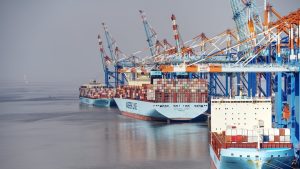
Environmental Considerations: Sustainable Practices and Impact Reduction
One of the most crucial aspects to consider when constructing a seaport in the Philippines is ensuring sustainable practices and reducing environmental impact. With a rich marine ecosystem and diverse biodiversity, it is essential to prioritize measures that protect and preserve the natural environment surrounding the port.
One effective way to achieve this is by implementing advanced wastewater treatment systems that efficiently remove pollutants before releasing water back into the ocean. Additionally, using renewable energy sources such as solar panels or wind turbines can significantly reduce greenhouse gas emissions produced during port operations. Furthermore, incorporating green spaces within the port area not only enhances aesthetics but also provides habitats for local flora and fauna, contributing to biodiversity conservation.
When it comes to waste management, recycling programs should be implemented throughout the entire port complex, encouraging staff and visitors alike to dispose of waste materials properly. This includes establishing separate collection points for recyclables such as cardboard, plastics, and glass. Partnering with local recycling facilities will ensure proper disposal or repurposing of these materials while reducing reliance on landfills.
Through strategic planning and implementation of sustainable practices, seaport construction in the Philippines can strike a balance between economic development and environmental stewardship.
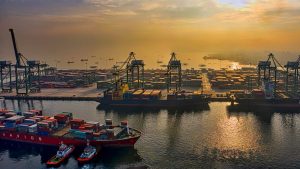
Efficient Operations: Technology and Automation Integration
Efficient operations are crucial for the success of any seaport construction, and incorporating technology and automation is key to achieving this goal. By integrating advanced technologies such as the Internet of Things (IoT), AI, machine learning, and robotics into various operational processes, seaports can streamline their operations and improve productivity.
For example, implementing IoT sensors can provide real-time data on cargo movements, enabling port operators to track shipments accurately, identify bottlenecks in the supply chain, and proactively address potential delays or issues. Additionally, AI-powered algorithms can optimize docking procedures by analyzing historical data on vessel arrivals and departures, weather conditions, and navigational patterns to ensure efficient use of port infrastructure.
Moreover, automation plays a crucial role in enhancing seaport operations. With automated systems for container stacking and retrieval using robotic cranes or Automated Guided Vehicles (AGVs), ports can significantly reduce human error while increasing throughput capacity. These automated systems also enhance safety by minimizing the risk of accidents involving heavy machinery.
Overall, integrating technology and automation into seaport construction and operations brings numerous benefits, such as increased efficiency, cost savings, improved safety, and enhanced customer satisfaction. Investing in these advancements will not only make the ideal seaport construction in the Philippines possible but also ensure its long-term success in a rapidly evolving global maritime industry.
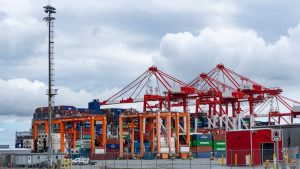
Importance of Safety Measures and Security Protocols
When it comes to seaport construction in the Philippines, ensuring the implementation of strict safety measures and security protocols is critical. Not only do these measures protect the workers and personnel involved in the construction process, but they also ensure that the final facility can operate efficiently and securely. Safety measures such as proper training programs, regular inspections, and the use of protective equipment are essential for preventing accidents and injuries during construction.
Moreover, security protocols play a vital role in safeguarding both the seaport construction site and its future operations. With increasing global threats like cyber attacks and terrorism, incorporating robust security measures from the initial planning stages is paramount. Advanced surveillance systems with video analytics technology, restricted access control systems, and stringent background checks for employees are all crucial components to enhance security within a seaport facility.
By prioritizing safety measures and implementing rigorous security protocols during seaport construction projects in the Philippines or any other location worldwide, we not only protect lives but also bolster economic growth by creating a secure environment for trade activities. Investing in proper safety practices ensures that workers can perform their tasks without fear while simultaneously safeguarding valuable assets within port facilities. Moreover, incorporating state-of-the-art security infrastructure minimizes potential vulnerabilities against physical threats or malicious activities aimed at disrupting trade operations. It is imperative that governments prioritize safety guidelines and enforce them rigorously to promote sustainable development within their maritime sectors.
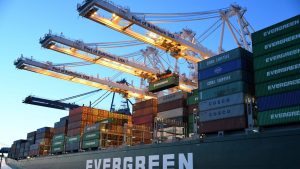
Summing Up: The Blueprint of an Ideal Seaport Construction in the Philippines
In conclusion, the blueprint of an ideal seaport construction in the Philippines is not only about creating a state-of-the-art infrastructure like a shipyard for ship repair in Tanza, Cavite, but also about addressing the needs challenges of the local communities. While it is important to invest in modern facilities and efficient logistics systems, equal emphasis should be placed on environmental sustainability and social responsibility. This means incorporating green technologies, such as solar power and water treatment systems, to minimize pollution and reduce the port’s carbon footprint. Additionally, engaging with local stakeholders and paying attention to their concerns will ensure that the seaport construction and development contribute to inclusive growth by creating job opportunities for nearby communities and preserving their cultural heritage.
Furthermore, integrating digital technology into all facets of seaport construction and operations can greatly enhance efficiency and productivity. Implementing a smart port system that leverages automation, data analytics, and artificial intelligence can streamline processes such as cargo handling, customs clearance, and vessel management. This not only reduces costs but also improves transparency and security within the port ecosystem. By embracing innovative solutions like blockchain-based supply chain tracking systems or unmanned aerial vehicles for inspection purposes, an ideal seaport construction will position the Philippines as a global player in maritime trade while stimulating economic growth at both regional and national levels.
Overall, ideal seaport construction in the Philippines requires a holistic approach that considers environmental sustainability, social impact, technological advancements, as well as engagement with local communities. Balancing these factors will not only optimize operations but also contribute to long-term economic development while protecting precious natural resources.

